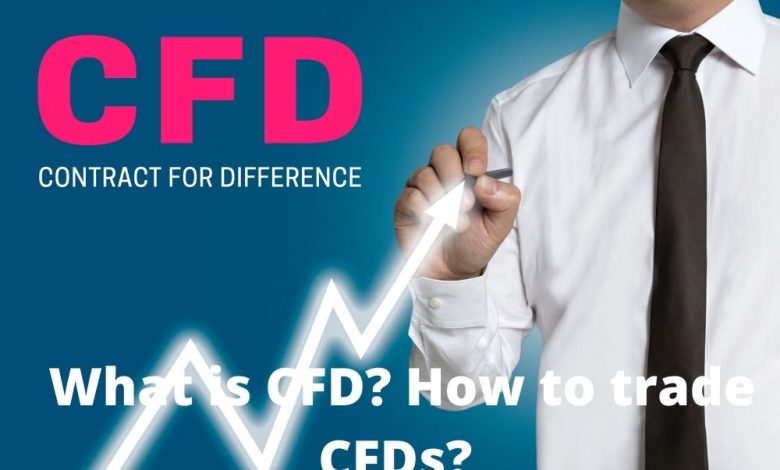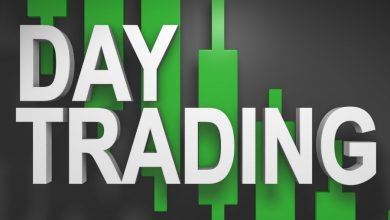What is CFD? How to trade CFDs?

The use of contracts for differences, or CFDs, as a security in your trading portfolio permits you to leverage your bets without taking physical ownership of an index or stock. Many forex brokers provide CFDs in particular countries, permitting investors to concentrate on the direction of an underlying instrument relative to income-producing strategies like dividend reinvestment. What is CFD? How to trade CFDs? We discuss related themes below.
What is CFD?
CFDs permit traders to trade in securities and derivatives price movements. Derivatives are instruments derived from an underlying asset. Investors use CFDs to make price bets as to if the underlying security or asset price will climb up or plunge.
CFDs do not demand that you borrow capital to short the underlying instrument. With a CFD, you may sell an instrument in case you think the price is moving lower or buy it if it strikes you that the price is moving higher. Trading a CFD’s benefit means you are only accountable for the difference between your purchase and sale price. A CFD may be traded on close to any capital markets product. Included here are commodities, forex, individual stocks, and indices.
CFDs use margin and leverage
By trading a CFD, you will be able to benefit from margin and leverage. However, you are only exposed to the loss that you could potentially generate. Hence, a broker may provide you leverage on these positions. The majority of CFD brokers provide leverage up to 20:1 on CFDs. On forex trading, the corresponding figure is 400:1. Twenty to one leverage is read as – for every dollar you post, you may trade close to twenty times that amount.
Is CFD trading profitable?
Your ability to post sufficient capital to cover a larger than normal loss on your positions is beneficial. This is akin to having to buy a stock if you think the price is climbing higher. For instance, your broker will assess every CFD and reckon the most you could lose in a day. You would then be asked to have, at a minimum, that amount committed to that position. Your broker will need extra funds to keep the position each time the market moves against you. This is akin to buying a stock outright, the implication being that you have to post enough capital to purchase the shares.
If you wish to purchase Apple shares from a stockbroker, they ask you to buy individual shares. The share price of Apple being $175 per share, the cost to buy 10 shares would be $1750. This would be comparable to posting $17.5 per share with more brokers providing CFD trading with leverage at 10:1.
There are a couple of disadvantages, however. First, you are not entitled to any dividends or interest that is paid when you buy the CFD relative to stock shares. Considering that you could still use margin, your returns could be more volatile than expected. Learn more about CFD margin requirements from InvestBy.
Steps to CFD trading: How to trade CFDs?
Opting for a market
Decide which market to concentrate on, using your broker’s fundamental and technical analysis research portal to plan your trade. Investby helps you here;
Deciding to buy or sell
Click buy in case you think the price will climb up or sell if you think the market will depreciate;
Selecting your trade size
Decide upon the number of CFDs you wish to trade. 1 CFD is equivalent to 1 physical share in equity trades;
Adding a stop loss
A stop loss is an order to close your position out at a particular price in case it moves far against you;
Monitor and close your trade
Having placed your trade, you will see your profit/loss in real-time at the screen’s top. Clicking the close trade button, you may exit your trade.
How to trade CFDs? : best CFD trading strategies
Margin trading implies that a fraction of the position will be put aside as collateral each time you open a position, or the margin. When market movements are amplified, you can make huge profits. These are the best CFD trading strategies –
News trading
Among close influencers of the growth outlook of a country, any statistics about growth, employment, business/consumer confidence can affect the demand for currency;
Pair trading
Pair trading permits you to take the benefit from divergences between two underlying assets. First, you have to opt for a strong/weak asset on the basis of the trend. You will then open a long position on the weaker asset . you can go short on the stronger asset;
Hedging
You can hedge your entire CFD portfolio on an index rather than on an individual stock. Find out more about hedging CFDs with Investby. Read the Investby Review.
Conclusion
CFD trading gives you access to capital markets and diverse instruments. You are just responsible for your losses. You do not have to buy underlying shares of stock or particular index or commodity futures. However, you have to minutely understand leverage and margin prior to buying a CFD, given that the risks could be high.





